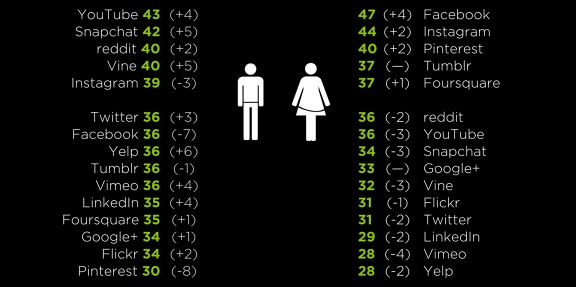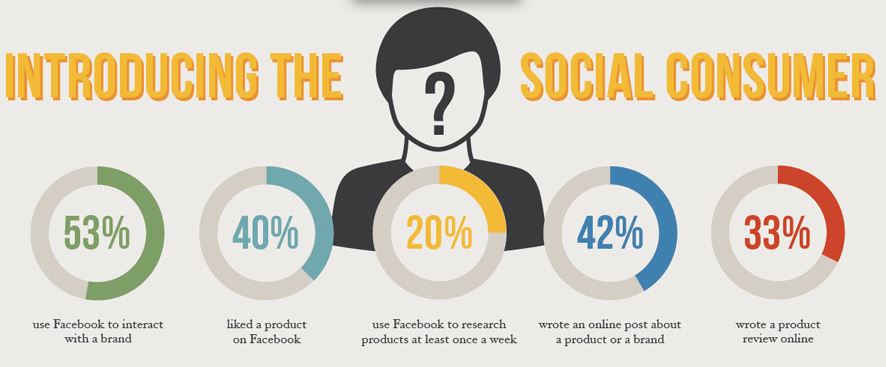Introduction
In the ever-evolving landscape of business, robust marketing strategy frameworks are the linchpin that propels organisations towards success. As postgraduates delving into the intricacies of the corporate world, it becomes imperative to grasp the key aspects of marketing strategy that can make or break a brand. This comprehensive guide aims to explore the fundamental elements of marketing strategy, providing insights rooted in academic rigor and real-world applicability.
1. Understanding the Essence of Marketing Strategy Frameworks
1.1 Defining Marketing Strategy: A Holistic Approach
In the intricate tapestry of business, marketing strategy stands as the overarching framework that shapes an organization’s path to success. To truly understand the essence of marketing strategy, we must delve into its multifaceted nature and the interconnected elements that contribute to its effectiveness.
Strategic Integration Across Business Functions: Marketing strategy isn’t an isolated function; it’s an integral part of the broader business strategy. This integration ensures that marketing efforts align seamlessly with overall organizational goals. From product development to sales and customer service, every facet of a business should harmonize to deliver a unified and compelling brand experience.
Balancing Short-Term Tactics with Long-Term Vision: While tactical maneuvers are essential for immediate gains, the essence of marketing strategy lies in its ability to balance short-term objectives with a long-term vision. It’s about cultivating sustained growth and resilience against market fluctuations. This requires a delicate interplay of agility and foresight, allowing organizations to navigate the present while positioning themselves strategically for the future.
1.2 The Evolution of Marketing Strategy: Navigating Change
Historical Perspectives: Understanding the essence of marketing strategy framework necessitates a journey through its historical evolution. Traditional marketing was often synonymous with outbound techniques, where businesses broadcasted their messages to a broad audience. Over time, this paradigm shifted towards more targeted and customer-centric approaches.
Adaptations in the Digital Era: In the contemporary landscape, the digital revolution has ushered in a new era of marketing. The advent of social media, data analytics, and e-commerce has transformed how businesses connect with consumers. Marketing strategy, once confined to print and broadcast media, now embraces a dynamic, interactive, and data-driven paradigm.
1.3 The Symbiotic Relationship with Business Objectives
Alignment with Organizational Goals: The essence of marketing strategy lies in its symbiotic relationship with overarching business objectives. For a strategy to be effective, it must not only enhance brand visibility but also contribute directly to revenue generation, market share expansion, or other key performance indicators set by the organization.
Measuring Impact and Adjusting Course: An effective marketing strategy is not static; it evolves in response to market dynamics. This requires robust measurement mechanisms and a commitment to continuous improvement. Key performance indicators (KPIs) serve as compass points, allowing organizations to assess the impact of their strategies and make data-driven adjustments as needed.
Marketing strategy frameworks guides organizations through the dynamic landscape of business. It’s a holistic approach that integrates seamlessly with broader business objectives, adapts to the evolving digital landscape, and maintains a delicate balance between short-term tactics and long-term vision.
As postgraduate students aspiring to navigate the complexities of marketing, comprehending the essence of marketing strategy provides a solid foundation for the subsequent explorations into market research, segmentation, targeting, and positioning strategies. In the following sections, we will unravel the intricacies of these foundational elements, shedding light on their significance in crafting successful marketing strategy frameworks .
2. Market Research: The Foundations of Strategic Decision-Making
2.1 The Role of Market Research
Unveiling Insights for Informed Decisions – Market research stands as the bedrock of strategic decision-making, offering a systematic approach to gathering, analyzing, and interpreting information about a market, its dynamics, and its participants. At its core, market research seeks to unveil insights that empower businesses to make informed and data-driven decisions.
Types of Market Research: Quantitative Research: Involves the collection and analysis of numerical data. Surveys, questionnaires, and statistical techniques quantify market trends, preferences, and behaviors. This provides a numerical foundation for decision-making. Qualitative Research: Focuses on understanding the underlying motivations, attitudes, and perceptions of individuals. Techniques such as interviews, focus groups, and observational studies delve into the nuances that quantitative data may not capture.
Market Analysis Frameworks: SWOT Analysis: Examining Strengths, Weaknesses, Opportunities, and Threats provides a comprehensive view of both internal and external factors that can influence strategic decisions. PESTLE Analysis: Evaluating Political, Economic, Social, Technological, Legal, and Environmental factors helps businesses anticipate changes in the broader environment.
2.2 Consumer Behaviour Analysis
Navigating the Psychology of Purchasing Decisions – Understanding consumer behavior is a cornerstone of effective market research. It involves delving into the psychological, social, and economic factors that influence individuals’ buying decisions. Key components include:
Motivation: What drives consumers to make a purchase? Uncovering the underlying motivations helps businesses tailor their marketing messages and offerings.
Perception: How do consumers perceive a brand or product? Perception shapes purchasing decisions, and market research helps identify and influence these perceptions.
Attitude and Beliefs: Consumer attitudes and beliefs impact brand loyalty. Through in-depth analysis, businesses can identify and leverage these factors to build stronger connections with their target audience.
2.3 Incorporating Behavioral Economics in Strategy Formulation
Nudging Consumer Behavior – The field of behavioral economics introduces the concept of nudging – subtle interventions that influence decision-making. By understanding cognitive biases, businesses can strategically design marketing interventions that guide consumers towards desired actions.
Anchoring: The first piece of information encountered often influences subsequent decisions. Pricing strategies, for example, can leverage anchoring to shape perceived value.
Loss Aversion: Consumers tend to weigh potential losses more heavily than gains. Crafting marketing messages that highlight the potential loss of not choosing a product or service can be a persuasive tactic.
Market research serves as the compass that guides strategic decision-making. It unveils the intricacies of markets, consumer behaviors, and competitive landscapes, providing businesses with the insights needed to navigate complex terrain. As postgraduate students, mastering the art of market research equips us with the foundational skills required for effective strategic planning. In the following sections, we will explore the strategies of segmentation, targeting, and positioning, examining how market research forms the basis for these crucial components of a comprehensive marketing strategy.
3. Segmentation, Targeting, Positioning (STP) Strategies
3.1 Segmentation
Segmentation involves dividing a heterogeneous market into smaller, more homogeneous groups based on specific characteristics. This allows businesses to tailor their marketing strategies to the unique needs and preferences of each segment. Key aspects include:
Demographic Segmentation: Dividing the market based on demographics such as age, gender, income, education, and family size. This provides a foundational understanding of consumer profiles.
Psychographic Segmentation: Considering lifestyle, values, attitudes, and interests helps create segments with shared psychographic traits, enabling more targeted messaging.
Behavioral Segmentation: Analyzing purchasing behavior, brand loyalty, product usage, and other behavioral factors aids in grouping consumers with similar buying patterns.
Benefits of Segmentation: Targeted Marketing: By understanding the distinct needs of each segment, businesses can create marketing campaigns that resonate specifically with those groups.
Resource Efficiency: Resources are allocated more efficiently when marketing efforts are directed towards specific segments rather than a broad, undifferentiated market.
3.2 Targeting
Precision in Audience Selection – Targeting involves selecting specific segments to focus marketing efforts on. It’s about identifying the most lucrative and receptive audience for a product or service. Key targeting strategies include:
Undifferentiated Targeting: Appealing to the entire market with a single strategy. This approach is suitable when the product has broad appeal and little variation in consumer preferences.
Differentiated Targeting: Tailoring marketing strategies for different segments. This allows businesses to capture a larger market share by addressing diverse needs.
Concentrated Targeting: Concentrating efforts on a single, well-defined segment. This strategy is beneficial for niche markets where a specialized product can meet unique needs.
3.3 Positioning
Crafting a Distinct Brand Image: Positioning is about creating a distinctive and appealing image for a product or brand in the minds of consumers. It involves shaping perceptions to highlight unique selling propositions. Key elements of positioning include:
Value Proposition: Clearly communicating the value a product or service brings to consumers. This goes beyond features to emphasize the benefits and solutions it provides.
Brand Differentiation: Identifying and promoting aspects that set the brand apart from competitors. Whether it’s quality, innovation, or customer service, differentiation builds a competitive edge.
Perceptual Mapping: Visualizing how consumers perceive brands relative to competitors helps in fine-tuning positioning strategies.
Consistency Across Touchpoints: Consistency is crucial in positioning. Whether through advertising, customer service, or product experience, the brand’s positioning should remain coherent. This builds trust and reinforces the desired image in consumers’ minds.
The Segmentation, Targeting, Positioning (STP) framework is a cornerstone of effective marketing strategy. It transforms market research insights into actionable plans, allowing businesses to connect with specific audience segments in meaningful ways. As postgraduate students delving into the nuances of marketing strategy, understanding the intricacies of STP provides a roadmap for crafting compelling and targeted campaigns. In the subsequent sections, we will explore the dynamics of digital marketing in the 21st century, elucidating how STP strategies adapt to the ever-evolving landscape of online consumer engagement.
4. Digital Marketing in the 21st Century
4.1 The Digital Transformation and Marketing Strategy Frameworks
Shifting paradigms in consumer engagement. The 21st century has witnessed a profound transformation in how businesses connect with consumers, largely driven by the rise of digital platforms. Digital marketing encompasses a spectrum of online channels, tools, and strategies that redefine the way brands communicate, engage, and build relationships with their audience. Key aspects include:
Omni-channel Presence: Consumers seamlessly move between various online platforms. Successful digital marketing requires a cohesive presence across channels such as social media, search engines, email, and websites.
Personalization: Leveraging data and analytics, digital marketing allows for highly personalized interactions. Tailoring content, recommendations, and offers based on individual preferences enhances user experience and engagement.
4.2 Content Marketing and SEO Integration
Content marketing is at the heart of digital strategies, focusing on creating and distributing valuable, relevant, and consistent content to attract and retain a clearly defined audience. This involves:
Storytelling: Crafting narratives that resonate with the target audience builds emotional connections and enhances brand loyalty.
Multimedia Content: Embracing diverse content formats such as videos, infographics, and podcasts caters to varied consumer preferences.
The Art and Science of SEO Optimization: Search Engine Optimization (SEO) is instrumental in ensuring that digital content is discoverable by search engines, thereby reaching a wider audience. Key elements of SEO integration include:
Keyword Research: Identifying and incorporating relevant keywords enhances visibility in search engine results.
Quality Link Building: Building a network of high-quality backlinks improves domain authority and search rankings.
User Experience Optimization: Ensuring websites are mobile-friendly, have fast load times, and provide a seamless user experience contributes to higher search rankings.
Digital marketing in the 21st century is characterized by a dynamic interplay of technology, data, and consumer expectations. As postgraduate students exploring the nuances of marketing strategy, understanding the intricacies of digital marketing provides a lens into the evolving landscape of consumer engagement. In the upcoming sections, we will delve into the realm of social media strategies, exploring how businesses can harness the power of social platforms to amplify their brand presence, foster engagement, and navigate the intricacies of the digital age.
5. Social Media Strategies for Brand Amplification
5.1 Harnessing the Power of Social Media
Building Communities and Fostering Engagement – In the digital era, social media has emerged as a dynamic and influential platform for brand communication. Social media strategies go beyond mere presence; they aim to build communities, foster engagement, and amplify brand messages. Key components include:
Content Variety: Diversifying content types – from visually appealing images and videos to informative infographics and thought-provoking articles – ensures a well-rounded and engaging social media presence.
Consistent Brand Voice: Establishing a consistent brand voice across social platforms contributes to brand recognition and fosters a sense of authenticity.
Two-Way Communication: Social media is inherently interactive. Encouraging dialogue, responding to comments, and actively engaging with the audience build a sense of community and trust.
5.2 Influencer Marketing
Navigating the Landscape of Influencer Partnerships. Influencer marketing has become a powerful strategy within social media, leveraging individuals with significant online followings to promote products or services. Key considerations in influencer marketing include:
Relevance and Authenticity: Aligning with influencers whose values and audience align with the brand ensures authenticity and credibility.
Micro-Influencers: Partnering with influencers with smaller but highly engaged audiences often leads to more meaningful connections and conversions.
Transparency and Disclosure: Maintaining transparency about influencer partnerships builds trust with the audience and adheres to ethical standards.
5.3 Crisis Management in the Social Media Era
Proactive Measures and Damage Control – While social media offers immense opportunities for brand amplification, it also poses challenges in the form of rapid information dissemination and potential crises. Effective crisis management on social media involves:
Proactive Monitoring: Constantly monitoring social media channels enables swift identification of potential issues before they escalate.
Transparent Communication: In the event of a crisis, transparent and timely communication is crucial. Addressing concerns openly and honestly helps rebuild trust.
Learning from Incidents: Post-crisis analysis provides valuable insights for refining social media strategies and preventing similar incidents in the future.
Social media strategies are integral to brand amplification in the digital age. As postgraduate students navigating the complexities of marketing strategy, understanding the dynamics of social media allows us to harness the power of online communities, influencers, and effective crisis management. In the following sections, we will explore the critical aspects of measuring success in marketing, diving into the realm of Key Performance Indicators (KPIs) and data-driven decision-making.
Measuring Success: Key Performance Indicators (KPIs)
6.1 Defining Relevant KPIs
Aligning Metrics with Business Goals – Effectively measuring the success of marketing strategies requires the definition and tracking of Key Performance Indicators (KPIs) that align with overarching business objectives. KPIs serve as quantifiable benchmarks, providing insights into the performance of various marketing initiatives. Key considerations include:
Business Objectives: Identifying the primary goals of marketing strategy frameworks – whether it’s increasing brand awareness, driving sales, or enhancing customer loyalty – informs the selection of relevant KPIs.
SMART Criteria: Ensuring that KPIs are Specific, Measurable, Achievable, Relevant, and Time-bound ensures clarity and effectiveness in evaluation.
6.2 Data-Driven Decision Making
Incorporating Analytics into the Decision-Making Process – The advent of advanced analytics tools has revolutionized the way businesses approach decision-making. In the context of marketing, leveraging data analytics is pivotal for making informed and strategic choices. Key components of data-driven decision-making include:
Data Collection and Analysis: Establishing robust data collection mechanisms and employing analytical tools help transform raw data into actionable insights.
Attribution Modeling: Understanding how various touchpoints contribute to conversions allows for more accurate attribution of success to specific marketing channels.
A/B Testing: Conducting controlled experiments with A/B testing provides empirical evidence on the effectiveness of different strategies, enabling refinement for optimal results.
6.3 Adapting Strategies Based on Performance Insights
Continuous Improvement Through Iterative Analysis – Measuring success is not a one-time task; it’s an ongoing process of evaluation, adjustment, and optimization. Constantly adapting strategies based on performance insights ensures agility and relevance. Key aspects include:
Regular Reporting: Establishing a regular reporting cadence allows for timely assessment of KPIs and performance against benchmarks.
Benchmarking Against Competitors: Comparing performance metrics with industry benchmarks and competitors provides context and identifies areas for improvement.
Iterative Testing: Embracing a culture of continuous improvement involves iteratively testing new ideas, analyzing results, and incorporating learnings into future strategies.
Measuring success in marketing is not merely about tracking numbers; it’s about deriving meaningful insights that inform strategic decisions. As postgraduate students immersed in the world of marketing strategy, understanding the intricacies of KPIs and data-driven decision-making empowers us to navigate the complexities of the digital landscape. In the final sections, we will delve into contemporary challenges faced by marketing professionals and explore emerging trends that shape the future of marketing strategy Frameworks.
7. Challenges and Future Trends in Marketing Strategy Frameworks
7.1 Contemporary Challenges
Adapting to Dynamic Market Conditions – The fast-paced nature of the business landscape introduces a set of challenges that marketers must navigate. Staying ahead in the face of these challenges requires strategic foresight and adaptability. Key contemporary challenges include:
Rapid Technological Advancements: The pace of technological evolution introduces both opportunities and challenges. Marketers must continually assess and adopt emerging technologies to stay relevant.
Consumer Empowerment: Empowered by information and choices, modern consumers demand personalized experiences, ethical practices, and transparency. Meeting these expectations poses a challenge for brands.
Navigating Ethical Considerations in Marketing – As consumers become more socially conscious, ethical considerations in marketing become increasingly important. Balancing business goals with ethical practices involves:
Authenticity and Transparency: Authenticity in messaging and transparent communication build trust. Ethical marketing practices involve truthfulness in advertising and fulfillment of promises.
Social Responsibility: Embracing corporate social responsibility (CSR) initiatives and sustainable practices aligns with consumer values and contributes to a positive brand image.
7.2 Future Trends in Marketing Strategy Frameworks
Artificial Intelligence and Automation – The integration of artificial intelligence (AI) and automation into marketing strategies is a defining trend. Key applications include:
Data Analysis and Personalization: AI enables advanced data analysis, allowing for more granular customer segmentation and personalized marketing strategies.
Chatbots and Virtual Assistants: Automated customer service through chatbots and virtual assistants enhances efficiency and provides instant support to consumers.
Sustainability as a Strategic Imperative
As environmental concerns take center stage, sustainability becomes a key consideration in marketing strategy. Trends in sustainable marketing include:
Green Marketing: Emphasizing environmentally friendly practices in products, packaging, and operations to appeal to eco-conscious consumers.
Ethical Sourcing: Communicating responsible sourcing of materials and fair labor practices in marketing messages.
In the dynamic landscape of marketing strategy, challenges and trends are intertwined. As postgraduate students aspiring to master the art of marketing, understanding and addressing contemporary challenges while staying attuned to future trends is imperative. Navigating technological shifts, meeting ethical expectations, and embracing sustainability are integral aspects of crafting strategies that resonate with both current and future consumers.
The journey from defining marketing strategy and understanding market research to navigating digital marketing, social media strategies, measuring success, and addressing challenges and trends provides a comprehensive framework for postgraduate students seeking to excel in the field of marketing strategy. As we look towards the future, the ability to adapt, innovate, and integrate ethical and sustainable practices will be crucial in shaping successful marketing strategies in an ever-evolving business landscape.
Relevant Marketing Strategy Frameworks Posts
Innovations in Marketing Strategy
Digital Marketing Dissertation Topics
By understanding these key aspects, postgraduate students and aspiring marketers can equip themselves with the knowledge and skills necessary to navigate the complexities of the ever-changing marketing strategy frameworks. If you enjoyed reading this post, I would be very grateful if you could help spread this knowledge by emailing this post to a friend, or sharing it on Twitter or Facebook. Thank you.





